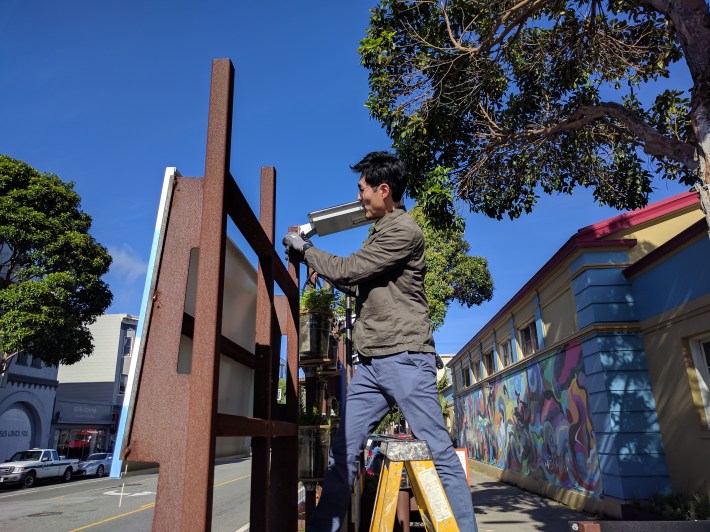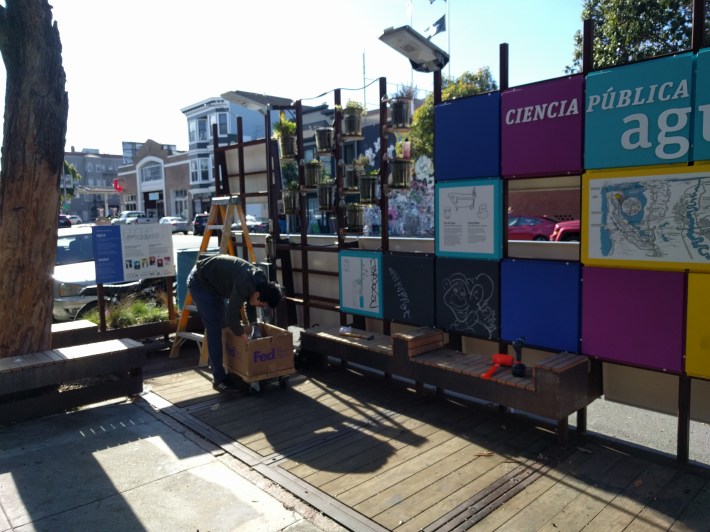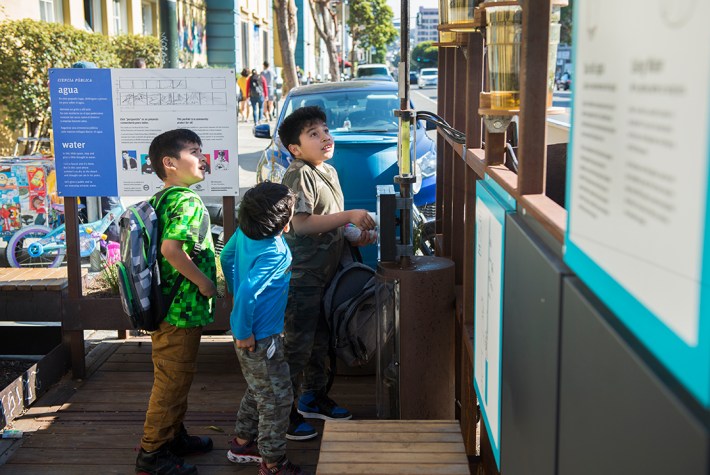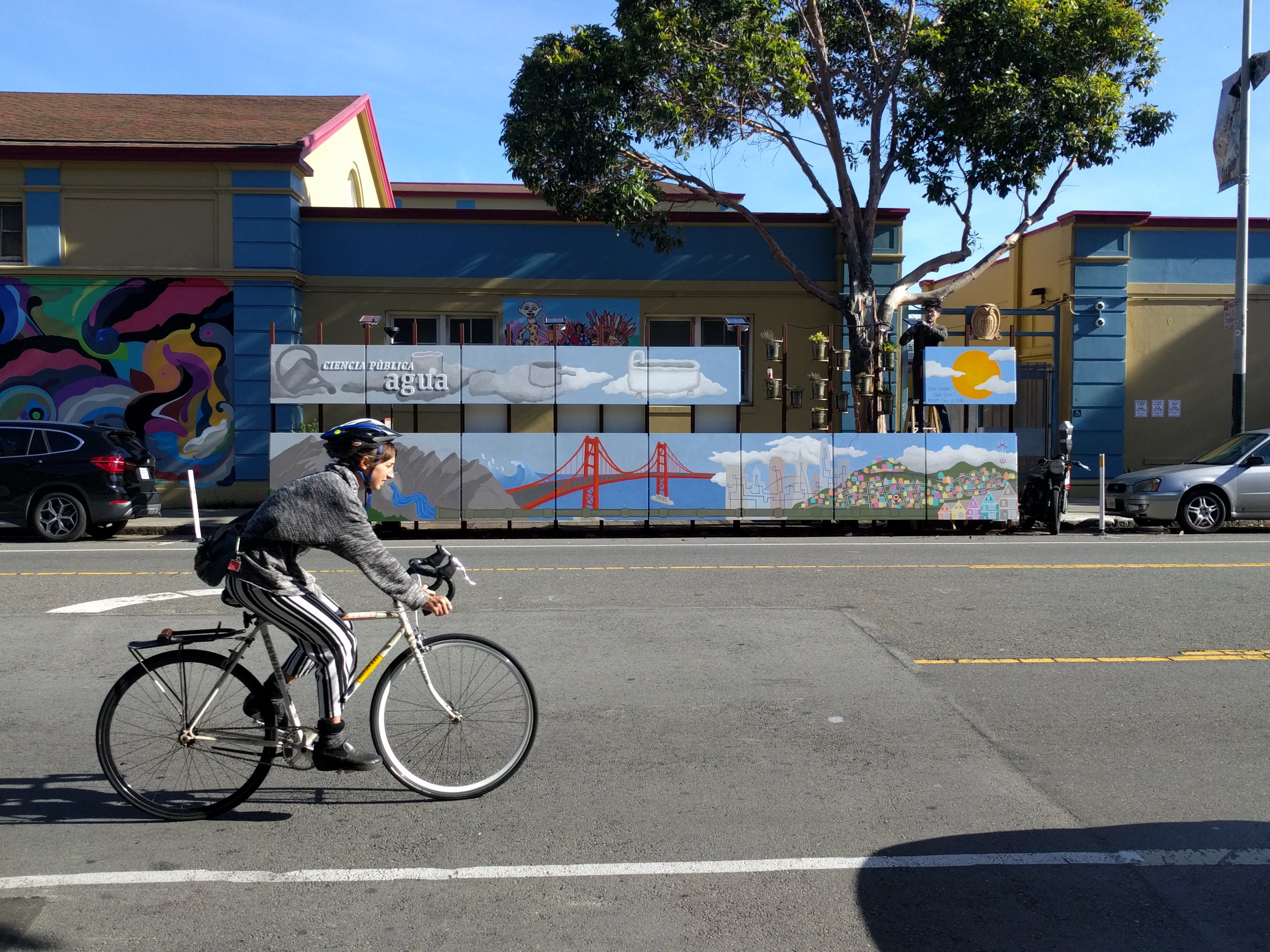Note: GJEL Accident Attorneys regularly sponsors coverage on Streetsblog San Francisco and Streetsblog California. Unless noted in the story, GJEL Accident Attorneys is not consulted for the content or editorial direction of the sponsored content.
Through its parklet program, San Francisco has managed to reclaim a few bits of its streets for something other than cars and transportation. Parklets, although open to the public, are usually coupled with and sponsored by restaurants, coffee bars or even fitness studios. In this way, parking spots are converted into public spaces and merchants get an additional draw in front of their shops. But a few years back the Exploratorium, San Francisco's art and science museum, did a first--it created a parklet by partnering with a school.
The museum got a grant from the National Science Foundation about four years ago and recruited local students to come up with a science education-themed parklet. "We looked at several sites in the Mission District and partnered with Buena Vista Horace Mann Elementary School on Valencia Street as our site partner," explained Eric Diamond, Director of Exhibit Development with the Exploratorium. "The first installation went in about four years ago."

Thus was born Ciencia Pública: Agua. The parklet, which takes up street space that was formerly used for two parking spaces in front of the school, is an extension of the school's science classroom with a living exhibit on sustainable water use. It includes "...a desalination pump, a rain gauge, and a low-evaporation plant watering device. Seating and greenery, including food plants free for harvesting by locals, make the parklet a comfortable and attractive neighborhood space," according to the museum's website.
The parklet bolsters the school's curriculum. "They wanted their students to work like scientists, so we installed a rain gauge and the science class goes out every month and measures the amount of rain that happened that month and then collects the data," said Diamond.

You may have noticed Diamond referred to the "first installation." The first parklet was totaled when a motorist crashed into it two years ago (the parklet came out of nowhere, presumably).
Fortunately, nobody was hurt. The Exploratorium decided to make the best of it. "Instead of just rebuilding the parklet the same color, we did a mural on top of that," said Diamond. The Exploratorium purchased paint and had the school's arts class design and paint it.
And thus was born the mural seen in the lead image.
They also reinforced the parklet with steel, to protect it--and the kids who use it--from future crashes.

On a related note, the Exploratorium is partnering with BART to provide free field trips to Bay Area schools. "The pilot program in 2018 brought 23,000 students to experience the world-famous museum of science, art, and human perception at Pier 15 on San Francisco’s Embarcadero," wrote the museum in an official statement. "For the 2019 school year, Bay Area teachers have already signed up 46,000 students to visit the Exploratorium through the program, with availability remaining open." The transit program is being funded by a donation from Arthur Rock and Toni Rembe Rock.





